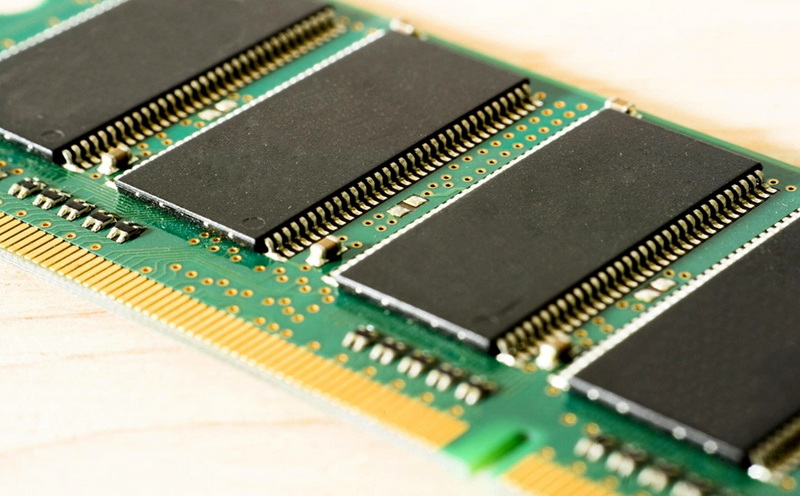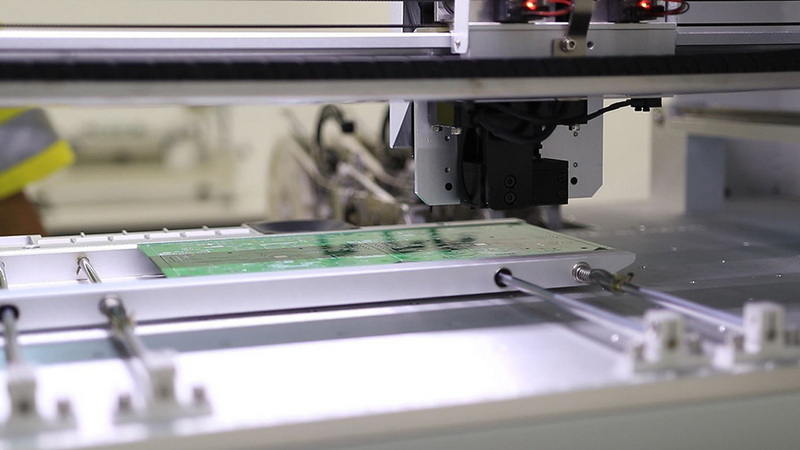Content Menu
● Introduction to SMT PCB Glue Coating
>> Importance of SMT Glue
● Types of Adhesives Used
>> Epoxy-Based Adhesives
>> Acrylic Adhesives
>> UV-Curable Adhesives
● Machinery Involved in SMT Glue Coating
>> Dispensing Machines
>>> Features of Dispensing Machines
>> Screen Printers
● Process Steps for SMT Glue Coating
● Benefits of Automated SMT Glue Coating Machines
● Challenges and Considerations
● Modern Advances in SMT Glue Coating
>> Red Glue SMT Solutions for Double-Sided PCBs
● Conclusion
● FAQ
>> 1. What is the purpose of SMT glue in PCB assembly?
>> 2. What types of adhesives are commonly used in SMT PCB glue coating?
>> 3. How does a dispensing machine work in SMT glue coating?
>> 4. What are the benefits of using automated SMT glue coating machines?
>> 5. What factors should be considered when selecting an SMT glue coating machine?
● Citations:
The SMT (Surface Mount Technology) PCB glue coating process is a critical step in the assembly of printed circuit boards (PCBs). It involves applying a specialized adhesive, commonly known as SMT glue or red glue, to secure components onto the PCB before soldering. This process ensures that components remain in place during high-temperature soldering processes, such as wave soldering and reflow soldering. In this article, we will delve into the details of the SMT PCB glue coating process, including its importance, the types of adhesives used, and the machinery involved.

Introduction to SMT PCB Glue Coating
SMT PCB glue coating is essential for maintaining the integrity of electronic components during the manufacturing process. The glue is typically applied using a dispensing machine, which accurately deposits small amounts of adhesive onto specific locations on the PCB. This process is crucial for preventing components from shifting or falling off during soldering, especially in double-sided PCBs where components on one side must remain secure while the other side is soldered.
Importance of SMT Glue
SMT glue is designed to be thermally stable, meaning it does not melt or degrade when exposed to the high temperatures encountered during soldering. This property ensures that components remain securely attached to the PCB throughout the assembly process. The glue also helps prevent component displacement and standing during reflow, which can lead to soldering defects.
Types of Adhesives Used
The adhesives used in SMT PCB glue coating are typically non-conductive and are formulated to provide strong bonding without interfering with the electrical functionality of the components. Common types include epoxy-based adhesives, acrylic adhesives, and UV-curable adhesives. Each type has its own advantages, such as fast curing times, high bond strength, and flexibility.
Epoxy-Based Adhesives
Epoxy-based adhesives are known for their high strength and durability. They are often used in applications where components are exposed to high stress or environmental extremes.
Acrylic Adhesives
Acrylic adhesives offer flexibility and are suitable for applications where components may experience thermal expansion or contraction.
UV-Curable Adhesives
UV-curable adhesives provide fast curing times and are ideal for high-volume production lines where speed is crucial.
Machinery Involved in SMT Glue Coating
The machinery used for applying SMT glue includes dispensing machines and screen printers. Dispensing machines are highly precise and can apply glue in various patterns, such as dots, lines, or complex shapes. Machines like the I.C.T-S300 and YAMAHA YRM-D are popular choices for their accuracy and versatility.
Dispensing Machines
Dispensing machines are the primary tool for applying SMT glue. They offer high precision and can be programmed to dispense glue in specific patterns and volumes. Modern jet dispensing technology has significantly improved the efficiency and reliability of glue application, allowing for faster and more precise dispensing processes[8].
Features of Dispensing Machines
- Precision: Dispensing machines can accurately place small amounts of glue, ensuring minimal waste and optimal bonding.
- Programmability: They can be programmed to follow complex dispensing patterns, making them suitable for a wide range of PCB designs.
- Speed: High-speed dispensing capabilities allow for efficient production, especially in high-volume manufacturing environments.
Screen Printers
While primarily used for solder paste, screen printers can also be used for applying SMT glue in certain applications. They provide a uniform layer of adhesive across the PCB, which is beneficial for specific component types.
Process Steps for SMT Glue Coating
The process of applying SMT glue involves several key steps:
1. Screen Printing or Dispensing: The first step involves applying the SMT glue onto the PCB using either a screen printer or a dispensing machine. The glue is applied to specific locations where components will be placed.
2. Component Placement: After the glue is applied, components are placed onto the PCB using a pick-and-place machine. The glue helps hold these components in place.
3. Curing: The PCB is then placed in a curing oven where the glue is heated to cure. This step ensures that the components are securely bonded to the PCB.
4. Reflow Soldering: Finally, the PCB undergoes reflow soldering to connect the components electrically. The SMT glue remains stable during this process, preventing component movement.

Benefits of Automated SMT Glue Coating Machines
Automated SMT glue coating machines offer several benefits over manual methods:
- Precision: Automated machines provide highly accurate glue placement, reducing errors and improving component bonding.
- Efficiency: They can operate at high speeds, significantly increasing production throughput.
- Consistency: Automated machines ensure consistent glue application, which is crucial for maintaining quality across large production runs.
Challenges and Considerations
Despite the advantages, there are challenges to consider when implementing SMT glue coating processes:
- Adhesive Selection: Choosing the right adhesive for the specific application is critical. Factors such as temperature resistance, flexibility, and curing time must be considered.
- Machine Maintenance: Regular maintenance of dispensing machines is necessary to prevent clogging and ensure consistent performance.
- Environmental Factors: The production environment can affect glue curing and bonding. Temperature and humidity levels must be controlled to optimize the curing process.
Modern Advances in SMT Glue Coating
Modern SMT glue coating processes have evolved significantly, offering improved efficiency and reliability. Modern jet dispensing technology allows for fast and precise glue application, making it suitable for complex PCB designs and high-volume production[2][8]. Additionally, the use of specially formulated adhesives has expanded the capabilities of SMT glue coating, enabling applications such as MEMS packaging and heavy component placement[8].
Red Glue SMT Solutions for Double-Sided PCBs
Red Glue SMT solutions have emerged as a cost-effective and efficient approach for double-sided PCB assemblies. This method uses a specialized adhesive that can be cured at lower temperatures, reducing thermal stress on components and eliminating the need for high-temperature reflow ovens[5]. The process involves applying red glue using a stencil printer, followed by component placement and curing. This approach is particularly beneficial for PCBs with both surface mount and through-hole components, offering a versatile solution that accommodates different component types[5].
Conclusion
The SMT PCB glue coating process is a vital step in ensuring the reliability and quality of electronic assemblies. By understanding the types of adhesives used, the machinery involved, and the process steps, manufacturers can optimize their production lines for efficiency and precision. Automated SMT glue coating machines play a crucial role in achieving these goals by providing accurate and consistent glue application. Modern advances in jet dispensing technology and specialized adhesives have further enhanced the capabilities of SMT glue coating, making it an indispensable tool in modern electronics manufacturing.

FAQ
1. What is the purpose of SMT glue in PCB assembly?
SMT glue is used to secure components onto the PCB before soldering, preventing them from shifting or falling off during high-temperature processes.
2. What types of adhesives are commonly used in SMT PCB glue coating?
Common types include epoxy-based adhesives, acrylic adhesives, and UV-curable adhesives, each offering different properties such as strength, flexibility, and curing speed.
3. How does a dispensing machine work in SMT glue coating?
Dispensing machines apply SMT glue with high precision, allowing for specific patterns and volumes to be programmed. They are essential for efficient and accurate glue application.
4. What are the benefits of using automated SMT glue coating machines?
Automated machines provide precision, efficiency, and consistency in glue application, significantly improving production quality and throughput.
5. What factors should be considered when selecting an SMT glue coating machine?
Factors to consider include dispensing accuracy, speed, compatibility with different adhesives, ease of programming, and machine footprint, as well as maintenance requirements and technical support.
Citations:
[1] https://www.wevolver.com/article/smt-process
[2] https://www.nano-di.com/resources/whitepapers/process-capabilities-smt-glue
[3] https://finestpcb.com/what-are-the-common-faults-and-solutions-for-smt-chip-processing/
[4] https://www.linkedin.com/pulse/smt-technology-process-parameters-pcba-processing-%E6%97%AD%E4%B8%9C-%E8%A2%81-bgh6c
[5] https://www.manufacturingtomorrow.com/news/2024/03/27/red-glue-smt-solution-a-cost-effective-and-efficient-approach-for-double-sided-pcbs-/22469/
[6] https://www.pcbjhy.com/blog/pros-and-cons-of-smt-pcb-assembly/
[7] https://www.adhesivesmanufacturer.com/smt-epoxy-adhesive/
[8] https://essemtec.com/en/news/news-detail-en/-/-/application-of-modern-smt-glue-and-dispensing-processes/
[9] https://www.protoexpress.com/blog/common-errors-surface-mount-technology-smt/
[10] https://www.macrofab.com/blog/innovations-in-solder-paste-printing-technology/
[11] https://www.masterbond.com/industries/surface-mount-adhesive-systems
[12] https://www.viasion.com/blog/common-challenges-in-smt-assembly-and-solutions/
[13] https://sumitron.com/smt-glue/
[14] https://www.itweae.com/applications/dispensing/surface-mount-adhesives
[15] https://www.allpcb.com/sns/smt-quality-problems-and-solutions-summa_26189.html
[16] https://www.globalwellpcba.com/pcb-glue/
[17] https://www.heraeus-electronics.com/en/products-and-solutions/adhesives/smt-adhesives/
[18] https://www.o-leading.com/news/SMT-quality-problems-common-defects-and-solutions-in-the-point-glue-process.html
[19] https://www.nordson.com/en/divisions/electronics-solutions/your-process/industries/pcb-and-smt-assembly
[20] https://gpd-global.com/dispensing-surface-mount-adhesive/




















